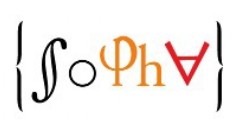In his pioneering work, David Pears (1977, 1979) has shown that Ludwig Wittgenstein's picture theory of propositions is to a large extent a reaction to Bertrand Russell's views of logical form as outlined in Theory of Knowledge (1913). In The Principles of Mathematics (1903), Russell claimed that judgement is a dual relation between a judging subject and a proposition. Later (1910) he accepted the multiple relation theory of judgement, according to which a judgement is a three or more place (multiple) relation between the judging subject and the various constituents of the judgement. Thus, for example, Othello's judgement that Desdemona loves Cassio would be analysed on this account as a complex relating Othello, Desdemona, love and Cassio.
The main challenge to Russell's earlier (1903) and later views of judgement was the problem of falsity, namely how to explain the difference between the truth and falsity of a judgement. According to the early analysis, the constituents of a proposition are worldly entities (objects and properties that exist in the world). If these worldly entities do not exist, then the proposition should not exist. So falsity is not possible. According to the later analysis, Othello's judgement that Desdemona loves Cassio is true if and only if the complex [love, Desdemona, Cassio] corresponds to something in the world, namely the complex [love, Desdemona, Cassio]. Thus Russell's (1910) analysis got through the problem of falsity. But Russell found that knowing the constituents of a judgement (i.e. knowing the constituents of a judgement) is not enough to understand the judgement (for other problems with the 1910 version of multiple judgement theory, see Griffin 1986, Pears 1977, Ricketts 1996, Pincock 2003, Shieh 2024). Russel's (1913) new proposal was that anyone who understands a judgement must know its constituents and its logical form. The form of an atomic sentence is its ‘utmost generalization'. For instance, the form of all dual complexes is ‘something has some relation to something'. Russell's (1913) view is that to understand Othello's judgement that Desdemona loves Cassio, one has to be acquainted with Desdemona, Cassio, love, and xRy where xRy symbolizes the logical form of this complex.
Russell's characterisation of logical form was rather problematic. He claimed that logical form is a logical object and one of the constituents of a judgement, but at the same time it is not an ‘entity' or ‘thing' (if logical form were a full-fledged thing like Desdemona or Otello, it would have to be combined by another logical form, which threatens regress ad infinitum). Furthermore, Russell claimed that logical forms are simple because they cannot be analysed, but at the same time logical forms are propositions and self-evident truths.
Wittgenstein's view of logical forms proposed in the Tractatus Logico-Philosophicus and the picture theory of propositions were an attempt to deal with the difficulties of Russell's (1913) view. The best-known element of Wittgenstein's response is the claim that logical constants are not representatives (and thus logical forms are not objects). Wittgenstein calls this thesis the “fundamental idea” (TLP, 4.0312). Furthermore, Wittgenstein claims that there is no “logical experience” (TLP, 5.552). This means that we have no acquaintance (direct or non-inferential knowledge) of logical forms. Logical constants are generated by the operation of joint negation (Potter 2000). However, some other details of Wittgenstein's answer are not so well known. In this talk I will explain how Wittgenstein responds to a problem raised by Russell (1922): how can existing and non-existing states of affairs have the same logical form? I will also explain how Wittgenstein dispenses with Russell's distinction between acquaintance and understanding.
According to Pears (1977), Wittgenstein's view of logical forms was Aristotelian. Russell's logical forms may appear as abstract objects (or abstract propositions) which we know non-inferentially and prior to any atomic (singular) propositions. Russell's view can be characterised as Platonic. According to Pears (1977), Wittgenstein saw forms of objects (in the Tractarian sense of something simple, changeless and unalterable) as inherent in objects. These inherent forms of objects generate the logical form possessed by pictures. In my view, Pears's answer is wrong, because it renders unsolvable Russell's challenge of how existing and non-existing states of affairs can have the same logical form. In my interpretation, objects have no internal nature; they have only combinatorial possibilities (possibility of forming states of affairs) (TLP, 2.0232, "Roughly speaking: objects are colourless"). The key thesis in the context of Russell's challenge is TLP, 3.4 “The proposition determines a place in logical space: the existence of this logical place is guaranteed by the existence of the constituent parts alone, by the existence of the significant proposition. determines univocally a states of affairs”. An elementary proposition is a set of names, let's just represent it as [a,b,c,d] (Morris 2008). Each such set determines a unique place in a logical space. Another set of objects determines a different place. If one of the objects a, b, c, d did not exist, the possible place would not exist. All objects exist necessarily, as opposed to states of affairs which exist contingently. Objects determine a place in logical space whether or not there is a fact composed of these objects. Thus a possibly existing state of affairs (positive fact) and a possibly non-existing state of affairs (negative fact) share the same logical place. Russell's challenge is resolved because existing and merely possible states of affairs share the same logical place, which is determined by the simple objects that compose the states of affairs.
The simplest logical forms are given by elementary propositions (TLP, 5.47). More complex logical forms are generated by the operation of joint negation. According to Wittgenstein, we do not need acquaintance with either objects or logical forms. Understanding an elementary proposition guarantees both knowledge of objects (TLP, 3.263) and knowledge of a logical form (TLP, 4.1211 "a proposition "f a" shows that in its sense the object a occurs (...)").

 PDF version
PDF version
